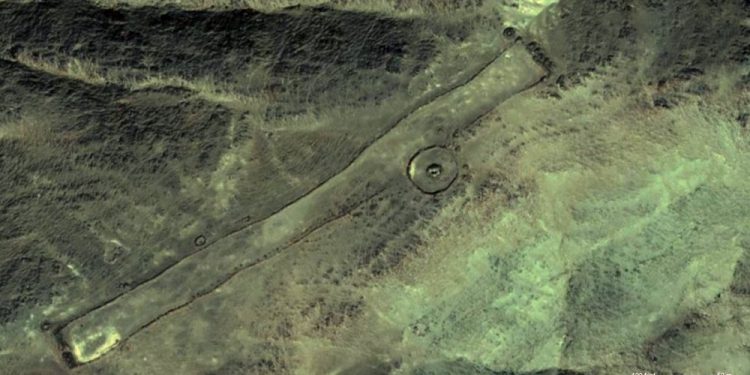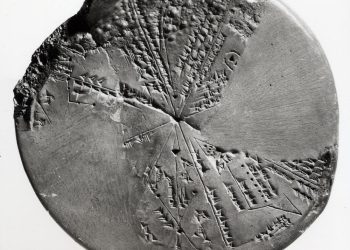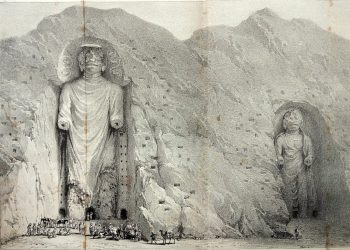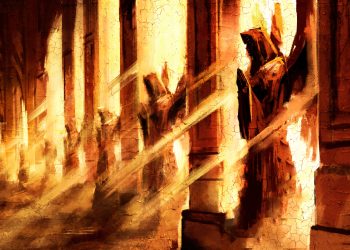More than seven thousands years ago, during a time when Arabia was not such a vast desert as it is today, curious people erected a series of mysterious stone monuments.
Not much was known about them, as archeological studies were limited. Now, however, researchers have gathered new data on the hundreds of stone structures that have been identified as monumental sites.
Although their exact purpose remains shrouded in mystery, early data indicates that the megalithic site may have been used by early pastoralists for ritual and religious practices.
“Our interpretation of mustatils is that they are ritual sites, where groups of people met to perform some kind of currently unknown social activities,” explained Dr. Huw Groucutt. “Perhaps they were sites of animal sacrifices or feasts.”
According to new data published in The Holocene, researchers from Max Planck Society in Jena, as well as colleagues from Saudi Arabia and other countries, discovered that the vast stone structures are composed of massive stones, shaped into gigantic rectangles.
In fact, researchers say that the monument are so big that they are now considered the oldest large-scale structures in the world, and they offer essential clues about how early people survived in semi-arid Arabia more than seven thousand years ago.
The mystery structures were first spotted by satellite images years ago, and they are a unqiue aspect of the archeological record of western Arabia. There are millions of stone structures that are thought to have been constructed throughout history.

Their exact purpose varies in function; some are thought to have been burial sites, others are thought to have been religious sites, while a third category suggests the existence of hunting traps.
But the most enigmatic is the religious sites, vast rectangular shapes built out of larger stones. These structures have been dubbed “mustatils,” an Arabian world that translates to “rectangle.”
These peculiar stone rectangles have so far only been denied in northwest Saudi Arabia. Their exact meaning remained shrouded in mystery, mostly due to a lack of study, and the fact that they were often covered by much younger structures.
These structures, although more than 7,000 years old, had never before been analyzed in detail. That is until experts from Max Planck, the Green Arabia Project, and the Saudi Ministry for Tourism teamed up to perform a detailed study of the ancient monuments through a combination of field studies and satellite images.
this allowed them to obtain an unprecedented and detailed view of the ancient structures, which in turn greatly extended their knowledge about the ancient monuments.
The new ground-based study has helped identify more than one hundred new mustatils at the Nefud Desert, joining a list of hundreds of other structures previously identified thanks to satellite imagery.
Ground-based surveys helped experts better understand how the ancients built the structures. So far, they’ve identified that mustatils typically are made up of two massive platforms that are interconnected by means of long, parallel stone walls, some of which are found to extend over six-hundred meters in length.
We know the structures date back at least 7,000 years thanks to charcoal discovered from inside the platform, which was dated using radiocarbon dating. Researchers have also discovered animal bones within the structures. The bones belonged both to domesticated and wild cattle.
Some 7,000 years ago, the area where the mustatils were built was not as arid as it is today. Rainfall was much higher, and a vast portion of the area was covered by grasslands and various lakes.
Mustatils: What you need to know
Ground-based studies, as well as analysis of aerial footage, have allowed experts to find the vast stone structures are composed of massive stones shaped into large rectangles.
Although there are no written texts that may shed light on the origin or purpose of the structures, research argues they were likely ritual sites where people would meet to perform religious ceremonies. This, however, is archaeological guesswork, and the structures may have been used for entirely different purposes.
The rectangular-shaped, stone-built structures are called Mustatils, which is Arabic for rectangle.
As revealed by researchers, Mustatils have only been found in northwest Saudi Arabia.
There are at least two hundred mustatils discovered to date, although many more may exist waiting to be discovered.
Ground-based studies have revealed that Mustatils are typically built of two massive platforms, interconnected by long parallel walls that sometimes extend up to six hundred meters in length.
The area where the Mustatils stand today was much different seven thousands years ago, when rainfall was much higher in the region, and the area was covered by more vegetation and lakes. Note; some of these structures may be far older.
Scientists theorize that the so-called Mustatils were built as a kind of social mechanism that helped mankind cope with a changing environment.
Mustatils are unique because they predate large-scale construction projects such as the pyramids by at least 2,000 years. This tells us that the region was home to an organized society that saw the need to construct large-scale monuments long before some of the first cities appeared.
Although not the oldest structures in the world—take a look at Göbekli Tepe—Mustatils are nonetheless unique in terms of large-scale construction in that region, in that particular early period, offering a unique insight into how humans lived in challenging environments thousands of years ago.
Join the discussion and participate in awesome giveaways in our mobile Telegram group. Join Curiosmos on Telegram Today. t.me/Curiosmos











